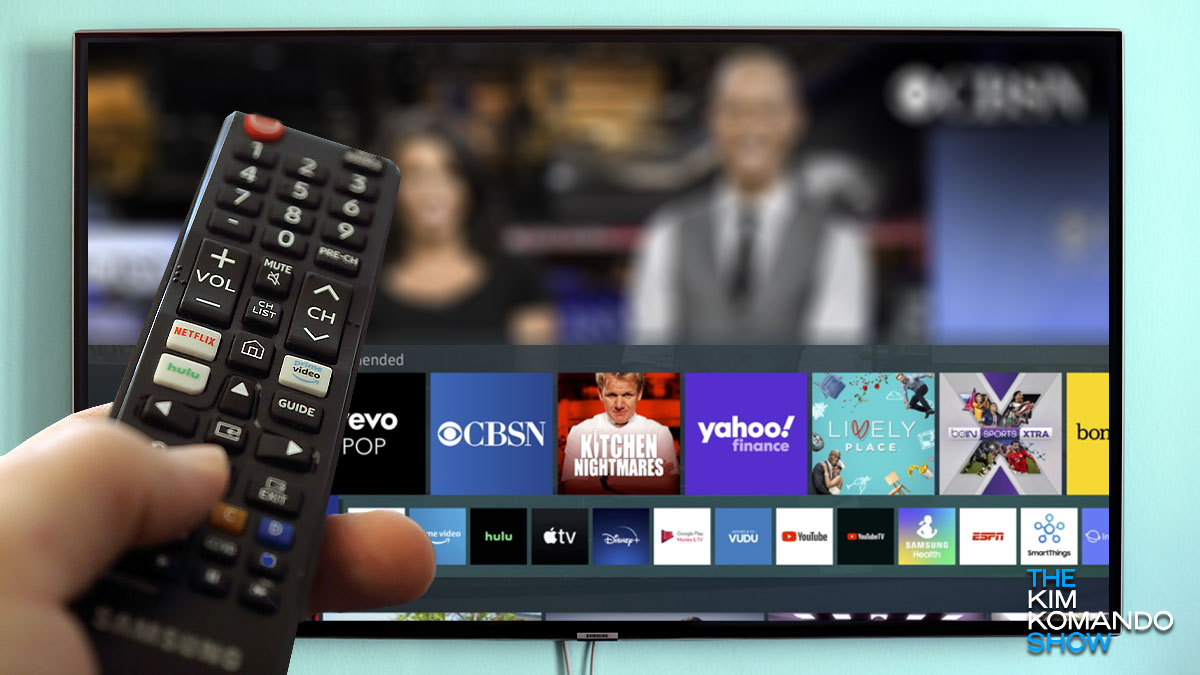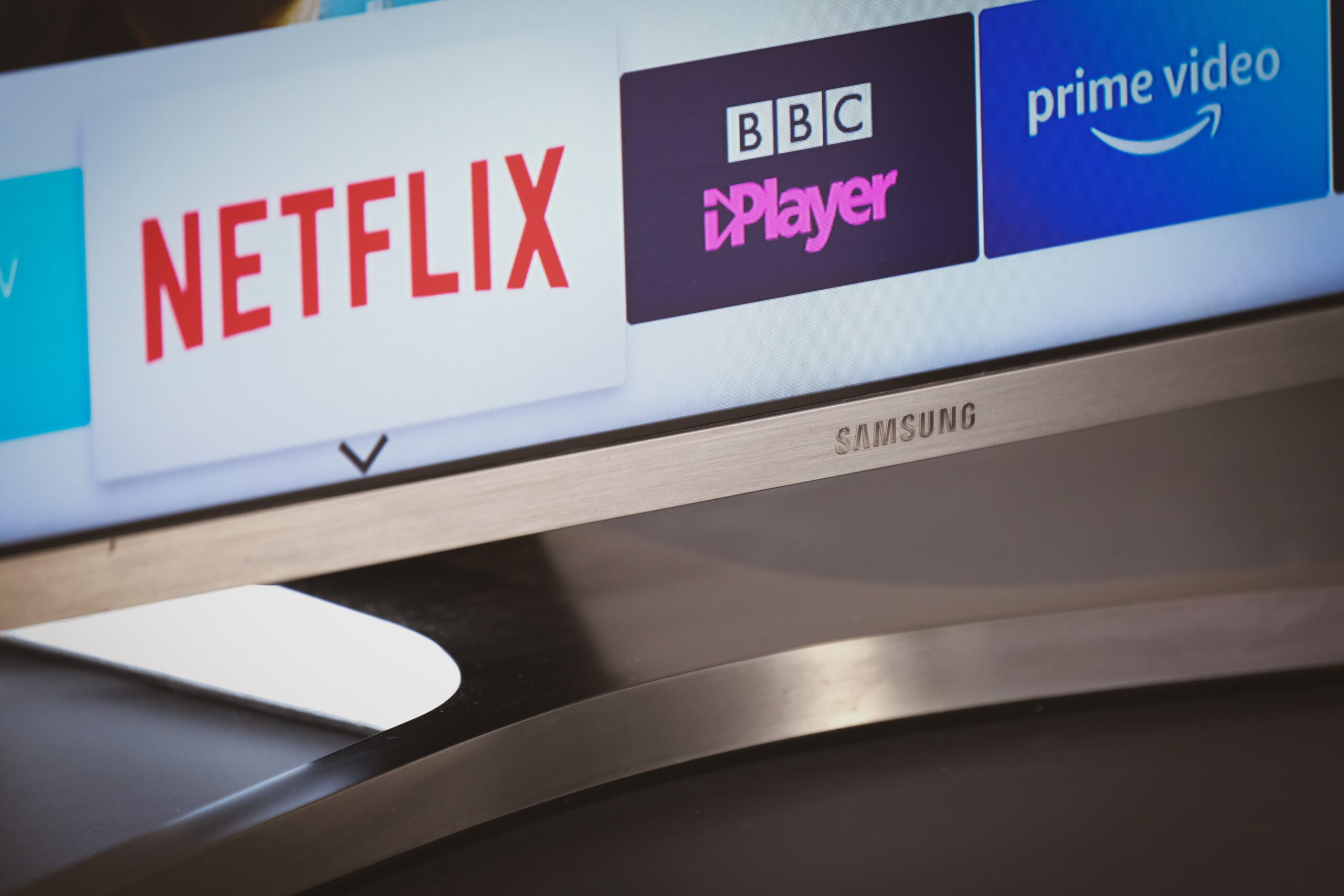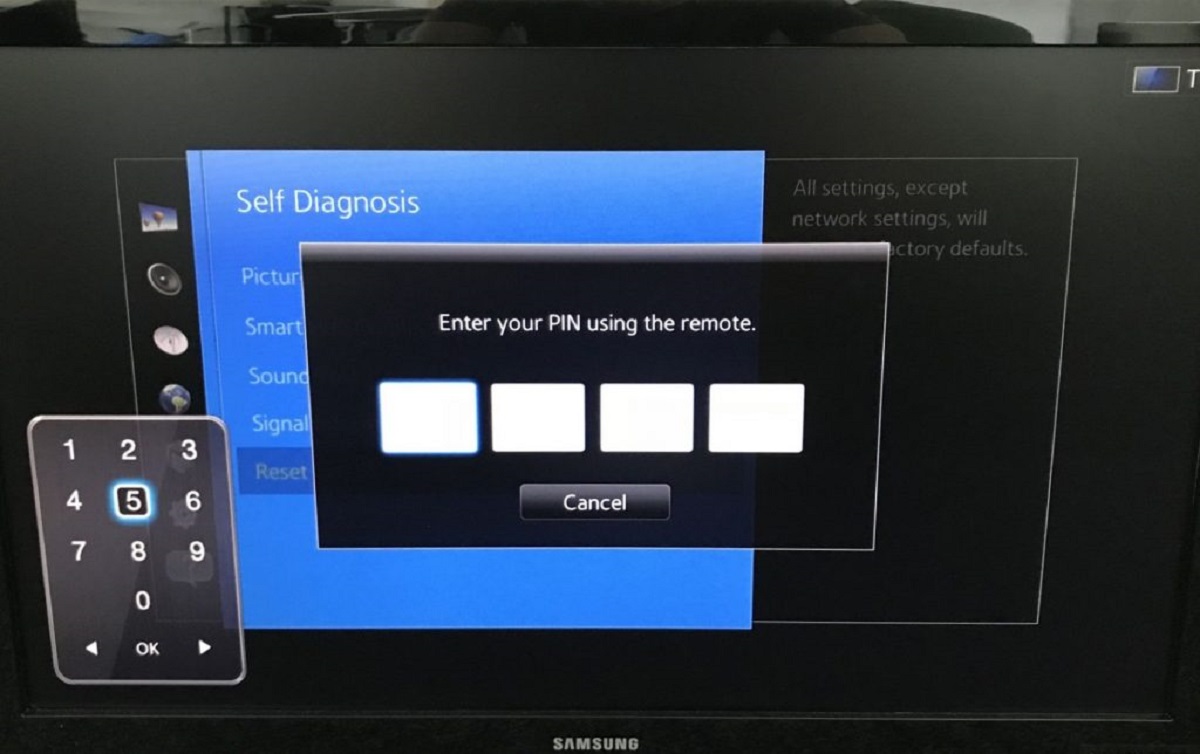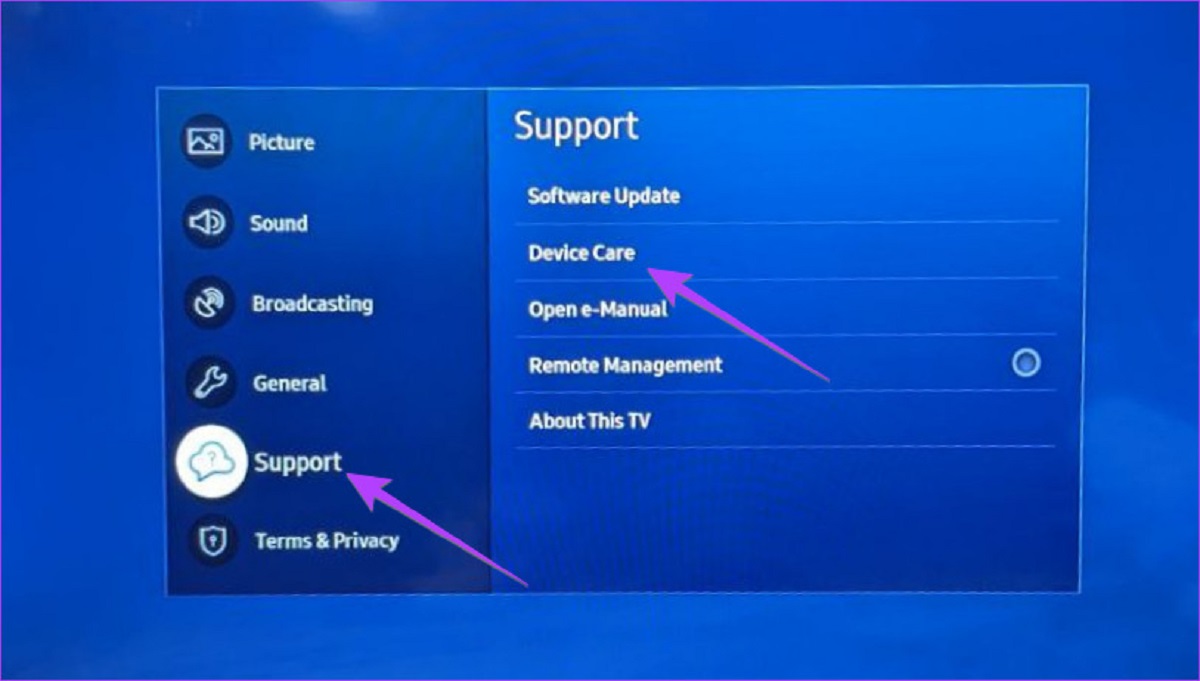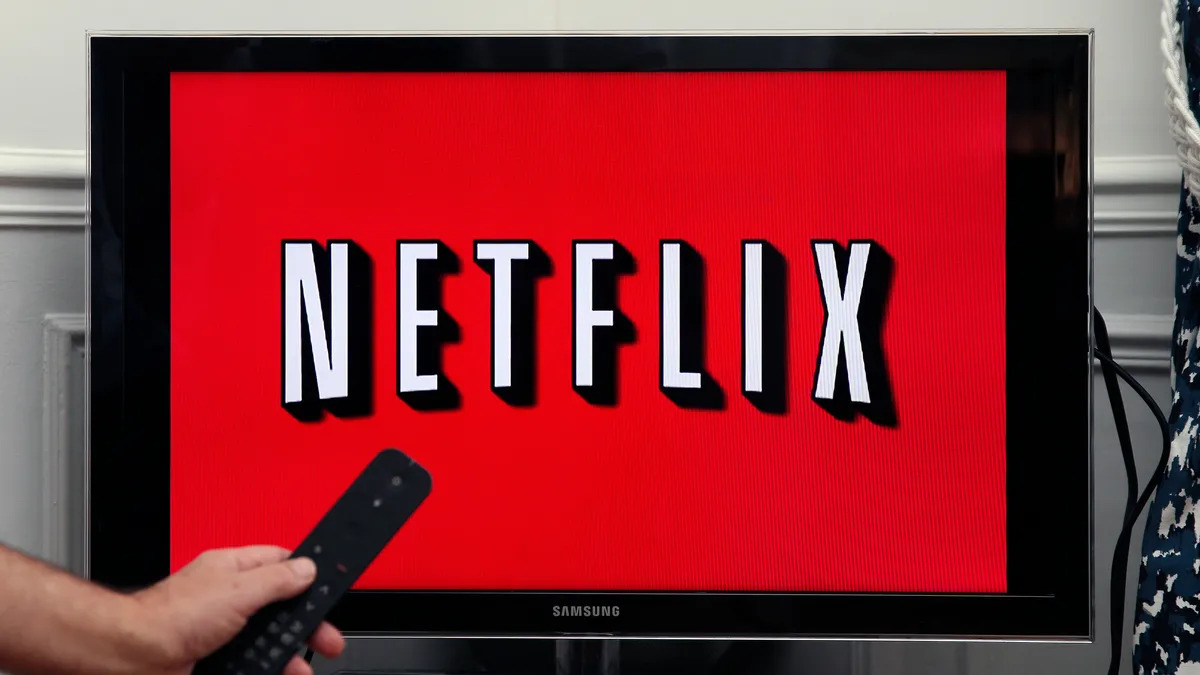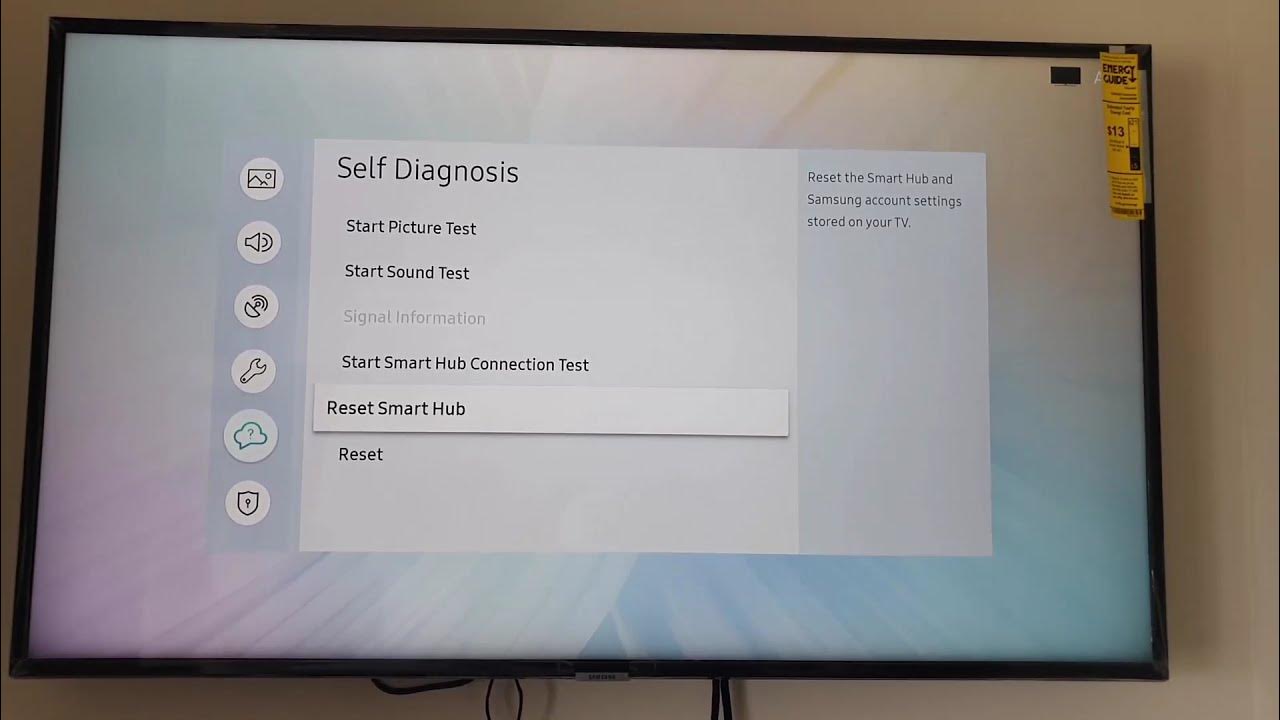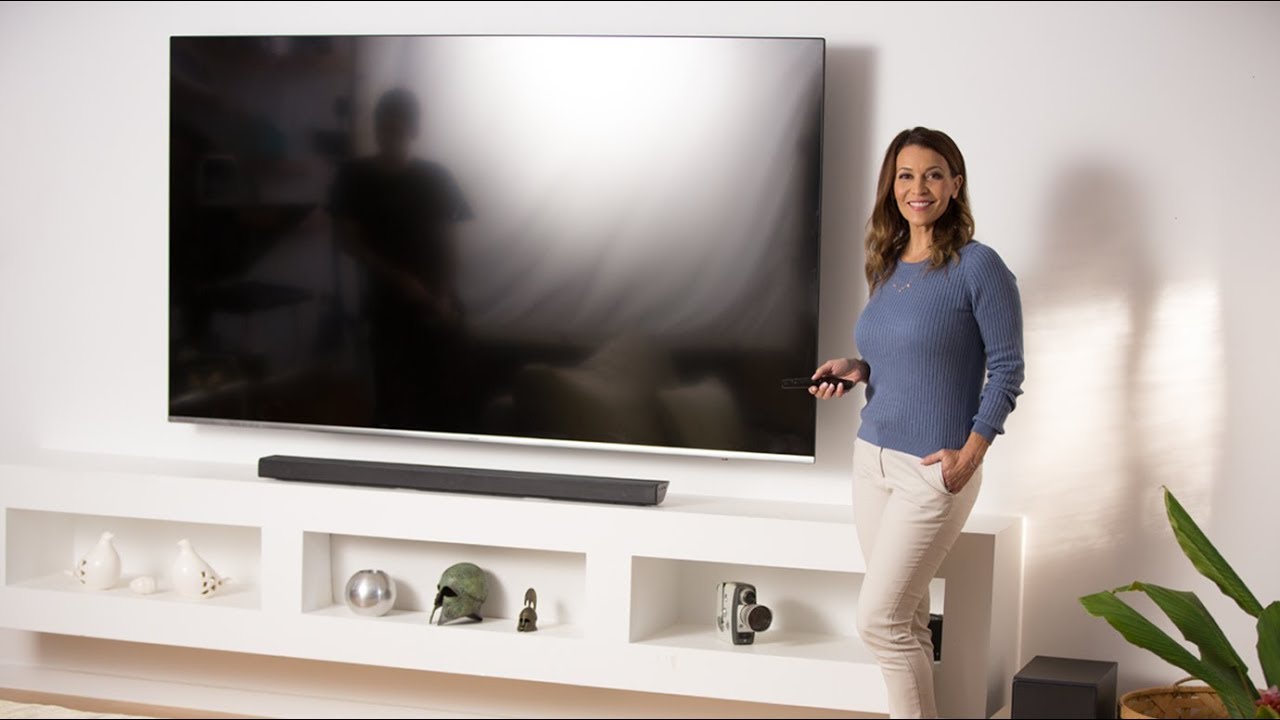Introduction
Welcome to this guide on how to reset Samsung Smart TVs. As a proud owner of a Samsung Smart TV, you may encounter situations where the device becomes unresponsive or experiences glitches that hinder its normal operation. In such cases, performing a reset can help resolve various issues and restore the TV to its default settings.
A reset can be useful if you are experiencing problems with network connections, apps crashing, or even if you plan to sell or hand down your TV to someone else. Resetting your Samsung Smart TV can often provide a fresh start and alleviate any issues you may be facing.
In this article, we will explore three methods of resetting your Samsung Smart TV: the soft reset, the factory reset, and power cycling. Each method serves a different purpose and can be applied depending on your specific situation.
It’s important to note that resetting your TV will erase all personal preferences, settings, and installed apps. Therefore, it’s advisable to consider alternative troubleshooting steps before proceeding with a reset. However, if you have exhausted all other options and are still experiencing persistent issues, a reset may be the most effective solution.
Now that we understand the importance and purpose of resetting a Samsung Smart TV, let’s dive into the different methods and the steps involved in each. Whether you’re a tech-savvy individual or just getting started with your Smart TV, this guide will help you navigate the process with ease.
Resetting the Samsung Smart TV
To ensure your Samsung Smart TV is functioning optimally, it may be necessary to perform a reset. This process will restore the TV to its original factory settings, giving you a fresh start and resolving any software or performance-related issues.
There are three methods you can use to reset your Samsung Smart TV: the soft reset, the factory reset, and power cycling. Each method has its own benefits and suitability for different situations.
Firstly, let’s explore the soft reset method. This is the simplest and quickest way to reset your TV. It involves turning the TV off and on again, similar to rebooting a computer. The soft reset is ideal for minor glitches and temporary issues that may arise. It doesn’t affect any of your personal settings or installed apps. To perform a soft reset, follow the steps below:
- Using the remote control, press and hold the power button for about 5 seconds.
- The TV will turn off and then turn back on automatically.
- Once the TV restarts, check if the issue has been resolved. If not, consider using one of the other methods.
If the soft reset didn’t fix the problem, the next option is a factory reset. This method is more comprehensive and will erase all your personal settings, including network configurations, installed apps, and customizations. To perform a factory reset, follow these steps:
- Access the Settings menu on your TV by pressing the Home button on the remote control.
- Using the arrow keys, navigate to the Settings option and press Enter.
- In the Settings menu, select the General tab and then scroll down to the Reset option.
- Choose the Factory Data Reset option and enter your TV’s PIN if prompted.
- Finally, select the Yes option to confirm the factory reset. Your TV will restart and go through the initial setup process.
Lastly, if you are still experiencing issues after trying the soft reset and factory reset, power cycling your TV might help. Power cycling involves completely disconnecting the TV from the power source and reconnecting it after a brief wait. This method can help clear any temporary electrical or firmware issues. Follow the steps below to power cycle your Samsung Smart TV:
- Unplug the TV power cord from the electrical outlet.
- Wait for about 1-2 minutes to allow any residual power to drain from the TV.
- Plug the power cord back into the electrical outlet.
- Press the power button on the TV or the remote control to turn it on. The TV will go through the startup process.
By following these methods, you can effectively reset your Samsung Smart TV and troubleshoot various issues that may arise. However, it’s important to remember that performing a reset will erase all personal data and settings, so it’s advisable to back up any important information before proceeding.
Method 1: Soft Reset
If you are experiencing minor glitches or temporary issues with your Samsung Smart TV, a soft reset can often resolve the problem. This method is quick and simple, requiring only a few steps to perform.
To initiate a soft reset, follow the instructions below:
- Using the remote control, locate the power button.
- Press and hold the power button for approximately 5 seconds.
- You will notice the TV screen turning off, indicating that the soft reset has been initiated.
- After a moment, the TV will automatically turn back on.
Once the TV has restarted, check if the issue you were experiencing has been resolved. The soft reset essentially acts as a quick reboot, similar to restarting a computer. It clears temporary files and refreshes the system, resolving minor software glitches and performance issues.
This method is particularly useful when your Samsung Smart TV becomes unresponsive or freezes. It is a non-invasive process that does not affect any of your personal settings or installed apps.
If the soft reset resolves the problem you were facing, you can continue enjoying your Samsung Smart TV without any further troubleshooting steps. However, if the issue persists or you are encountering more significant problems, you may need to consider a factory reset or other troubleshooting methods.
Remember, a soft reset is a quick and easy solution for minor issues. It is always worth attempting before moving on to more involved troubleshooting steps.
In the next section, we will explore the factory reset method, which is a more comprehensive reset option that erases all personal data and settings on your Samsung Smart TV.
Method 2: Factory Reset
If you’re experiencing persistent issues with your Samsung Smart TV that cannot be resolved with a soft reset, a factory reset may be necessary. This method restores the TV to its original factory settings, erasing all personal preferences, settings, and installed apps.
Please note that performing a factory reset will result in the loss of all data stored on your TV, including network configurations and app settings. Therefore, it’s crucial to consider this option as a last resort and back up any important data beforehand.
To perform a factory reset on your Samsung Smart TV, follow these steps:
- Using the remote control, press the Home button to access the TV’s home menu.
- Using the arrow keys on the remote, navigate to the Settings option and press Enter.
- In the Settings menu, scroll down and select the General tab.
- Within the General tab, locate and select the Reset option.
- Choose the Factory Data Reset option from the available choices.
- If prompted, enter your TV’s PIN to proceed with the factory reset.
- Finally, select the Yes option to confirm the reset. This will initiate the factory reset process.
Once the factory reset is confirmed, your Samsung Smart TV will restart and go through the initial setup process. You will need to reconnect to your Wi-Fi network, accept the terms and conditions, and set up your preferences again from scratch.
It’s important to note that a factory reset should only be considered if all other troubleshooting methods have been exhausted. This method provides a fresh start for your TV, resolving more complex issues that may be caused by software conflicts or errors.
Before performing a factory reset, it’s advisable to consult your TV’s user manual or the Samsung support website for any specific instructions or warnings. Additionally, remember to back up any important data or settings to ensure they can be restored after the reset process is complete.
Now that we have covered the factory reset method for resetting your Samsung Smart TV, let’s explore another troubleshooting option in the next section: power cycling.
Step 1: Accessing the Settings Menu
In order to perform a factory reset on your Samsung Smart TV, you need to access the settings menu. This menu allows you to navigate through various options and make changes to your TV’s settings.
To access the settings menu on your Samsung Smart TV, follow the steps outlined below:
- Using your TV’s remote control, locate the Home button.
- Press the Home button to display the TV’s home menu on the screen.
- Using the arrow keys on the remote, navigate to the Settings option.
- Once you have highlighted the Settings option, press the Enter button to select it.
The settings menu will now be displayed, giving you access to various settings and options for your Samsung Smart TV.
Depending on the model and firmware version of your TV, the settings menu may have different layouts. However, common options found in the settings menu include picture and sound settings, network settings, app management, and system updates.
If you’re having trouble locating the settings menu or if your TV’s menu structure is different, consult your TV’s user manual or refer to Samsung’s support website for specific instructions tailored to your TV model.
Accessing the settings menu is the first step towards performing a factory reset on your Samsung Smart TV. In the next section, we will discuss the steps involved in executing a factory reset.
Step 2: Performing a Factory Reset
Once you have accessed the settings menu on your Samsung Smart TV, you can proceed with performing a factory reset. This step will restore your TV to its original factory settings, erasing all personal preferences, settings, and installed apps.
To perform a factory reset on your Samsung Smart TV, follow the step-by-step instructions below:
- Within the settings menu, navigate to the General tab. The location of this tab may vary depending on your TV’s model and firmware.
- Scroll down using the arrow keys on your remote until you find the Reset option.
- Select the Reset option by pressing the Enter button on the remote.
- From the available choices, choose the Factory Data Reset option.
- Depending on the security settings you have set up, you may be prompted to enter the TV’s PIN to proceed with the factory reset. Enter the PIN if required.
- After confirming your choice to proceed with the factory reset, select the Yes option.
At this point, the factory reset process will be initiated, and your Samsung Smart TV will begin erasing all personal data and settings from its internal storage.
It’s important to note that the factory reset process may take a few minutes to complete. During this time, your TV will restart and go through the initial setup process, just as it did when you first purchased it.
Once the factory reset is complete, your Samsung Smart TV will be restored to its original factory settings. You will need to reconnect to your Wi-Fi network, accept the terms and conditions, and set up your preferences again.
Keep in mind that performing a factory reset is irreversible, and all data and settings will be permanently erased. It’s recommended to back up any important files or settings before proceeding with the factory reset process.
In the next step, we will discuss the final confirmation and setup steps after performing a factory reset on your Samsung Smart TV.
Step 3: Confirmation and Setup
After performing a factory reset on your Samsung Smart TV, the final step involves confirming the reset and going through the setup process to personalize your TV again.
Once the factory reset is complete, follow these steps to confirm the reset and set up your TV:
- Your TV will automatically restart after the factory reset. Wait for the TV to boot up.
- On the initial setup screen, select your preferred display language.
- Next, choose your country or region from the available options.
- Agree to the terms and conditions by selecting the appropriate option.
- Connect your Samsung Smart TV to your Wi-Fi network by selecting your network and entering the necessary credentials.
- Once connected, your TV will check for firmware updates. If any updates are available, follow the on-screen instructions to download and install them.
- Customize your TV settings according to your preferences, such as picture and sound settings, parental controls, and other options.
As you progress through the setup process, you will have the opportunity to set up your Samsung account, link your TV to other devices, and download and install apps from the Samsung Smart Hub.
It’s important to note that the setup process may vary depending on your TV model and firmware version. Follow the on-screen instructions and refer to your TV’s user manual or Samsung’s support website for any specific guidelines or troubleshooting steps.
Once you have completed the confirmation and setup steps, your Samsung Smart TV will be ready to use with its default factory settings. Take this opportunity to personalize your TV settings and reinstall any necessary apps to enhance your viewing experience.
In the next section, we will explore an alternative method called power cycling, which can be used as a troubleshooting step for various TV issues.
Method 3: Power Cycling the TV
If you’re experiencing issues with your Samsung Smart TV such as freezing, slow performance, or connectivity problems, power cycling can often help resolve these issues. Power cycling involves completely turning off the TV, disconnecting it from the power source, waiting for a short period, and then reconnecting and turning it back on.
To power cycle your Samsung Smart TV, follow the steps below:
- Locate the power cord connected to your TV.
- Gently unplug the power cord from the electrical outlet or power strip.
- Wait for about 1-2 minutes to allow any residual power to drain from the TV.
- After the waiting period, plug the power cord back into the electrical outlet or power strip.
- Press the power button on the TV or the remote control to turn it back on.
When the TV powers back on, it will go through the regular startup process. This method can help resolve issues caused by temporary electrical or firmware glitches, and it’s often a quick and simple fix for minor problems.
Power cycling your TV essentially clears any temporary data or settings that may be causing performance issues. It allows the TV to start fresh and establish a clean connection with devices and networks.
It’s important to note that power cycling does not erase any personal data or settings on your Samsung Smart TV. It is a non-invasive troubleshooting method that can be performed without the risk of losing any stored information.
If power cycling does not resolve the issue you’re facing with your TV, you may need to explore other troubleshooting options, such as a soft reset or factory reset, or seek professional technical assistance.
In the next section, we will summarize the steps and provide some concluding remarks on resetting your Samsung Smart TV.
Step 1: Unplugging the TV
Power cycling involves completely turning off your Samsung Smart TV by unplugging it from the power source. This step is essential to allow any residual power to drain from the TV, ensuring a fresh start when you reconnect it.
To begin the power cycling process, follow these steps:
- Locate the power cord connected to your Samsung Smart TV.
- Gently grip the power cord near the end that is plugged into the TV.
- With a firm but careful grip, gently pull the power cord out from the electrical outlet or power strip.
By unplugging the TV, you effectively cut off its power supply, allowing the internal components to fully power down. This step is crucial because it helps clear any temporary electrical or firmware issues that might be affecting the TV’s performance.
It’s recommended to wait for about 1-2 minutes after unplugging the TV. This waiting period allows enough time for any residual power to drain completely.
During this time, you can inspect the power cord for any visible signs of damage or wear. If you notice any issues with the power cord, consult the TV’s user manual or contact Samsung’s support for guidance on obtaining a replacement.
Unplugging the TV is the initial step in power cycling, and it prepares the TV for the next steps to be performed. In the next section, we will discuss the second step of power cycling: waiting and reconnecting the TV.
Step 2: Waiting and Reconnecting
After unplugging your Samsung Smart TV in the first step of power cycling, the next step is to wait for a brief period before reconnecting the TV to the power source. This waiting period allows any residual power to drain from the TV, ensuring a fresh restart when you reconnect it.
To proceed with step 2 of power cycling, follow these instructions:
- After unplugging the power cord, set it aside and leave the TV disconnected from the power source.
- Wait for approximately 1-2 minutes, allowing sufficient time for any residual power to dissipate.
During this waiting period, the internal components of the TV will completely power down. This is important because it helps to clear any temporary electrical or firmware issues that may have been affecting the TV’s performance.
While you wait, you can take the opportunity to inspect the power cord and ensure it is in good condition. Check for any visible signs of damage such as fraying or exposed wires. If you notice any issues with the power cord, it’s advisable to replace it before reconnecting the TV.
After the waiting period, you can proceed to reconnect the TV to the power source. To do this, follow these steps:
- Take hold of the power cord that you previously set aside.
- Gently plug the power cord back into the electrical outlet or power strip.
Ensure that the power cord is securely connected and inserted fully into the outlet or power strip. This step ensures that the TV is properly powered and ready for the next step in the power cycling process.
With the TV reconnected, you are now ready to proceed to the final step of power cycling: powering on the TV. In the next section, we will discuss the third and final step of power cycling your Samsung Smart TV.
Step 3: Powering the TV On
After waiting and reconnecting your Samsung Smart TV in the previous steps of power cycling, you’re now ready to power on the TV. This final step helps initiate a fresh startup, allowing the TV to establish a clean connection with devices and networks.
To power on your Samsung Smart TV, follow these simple instructions:
- Locate the power button on your TV or grab the TV remote control.
- Press the power button on the TV or use the corresponding power button on the remote control.
Upon pressing the power button, your Samsung Smart TV will begin to boot up. You’ll typically see an indicator light or the manufacturer’s logo on the screen, indicating that it’s turning on.
During the startup process, the TV’s internal systems will initialize, and you’ll eventually be directed to the home screen or the last input source you were using before performing the power cycle.
It’s important to note that the initial boot-up process may take a few moments, depending on the TV model and firmware. Patience is key as the TV completes its startup procedures.
Once the TV has powered on and is displaying its home screen or the desired input source, you can proceed to use your Samsung Smart TV as usual.
Powering on the TV after performing a power cycle allows the TV to start fresh, potentially resolving any temporary electrical or firmware issues that may have been affecting its performance. It’s a simple and effective troubleshooting method for various TV problems such as freezing or connectivity issues.
In case the power cycle doesn’t resolve the issue or it reoccurs frequently, you may need to consider exploring other troubleshooting options or seeking technical assistance from the manufacturer or a qualified technician.
With the TV powered on, you can now enjoy your Samsung Smart TV without the issues you were facing before. In the next section, we will summarize the steps involved in power cycling and offer some final thoughts on troubleshooting your TV.
Conclusion
Resetting a Samsung Smart TV can often be a useful troubleshooting step to resolve various issues and restore the TV to its default settings. In this guide, we explored three methods of resetting: the soft reset, the factory reset, and power cycling.
The soft reset is a quick and simple way to address minor glitches and temporary issues. It involves turning the TV off and on again, similar to rebooting a computer. This method is non-invasive and doesn’t affect any personal settings or installed apps.
The factory reset, on the other hand, is a more comprehensive reset option that erases all personal data and settings on the TV. It can be effective when facing persistent issues or when preparing the TV for sale or transfer. However, performing a factory reset should be considered as a last resort, as it permanently removes all data and settings.
Power cycling, the third method discussed, involves completely turning off the TV, disconnecting it from the power source, waiting, and then reconnecting and turning it back on. This method can help resolve issues caused by temporary electrical or firmware glitches.
By following the steps outlined in this guide, you can successfully reset your Samsung Smart TV and troubleshoot various issues. Remember to consider alternative troubleshooting steps before proceeding with a reset and to back up any important data or settings.
If you encounter persistent issues or if the resetting methods don’t resolve the problem, it’s recommended to seek assistance from the manufacturer’s support or consult with a professional technician.
We hope this guide has provided you with valuable insights and assistance in resetting your Samsung Smart TV. Remember, a well-maintained and properly reset TV ensures an enjoyable viewing experience for years to come.







